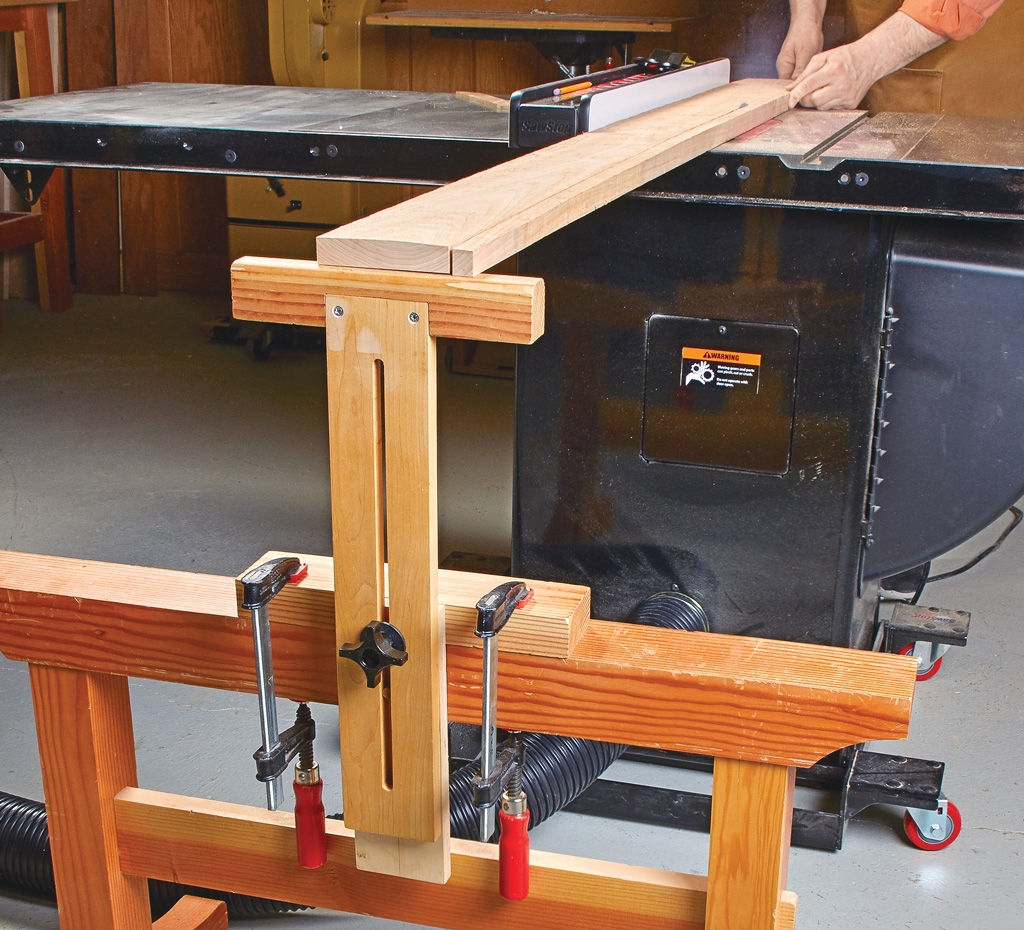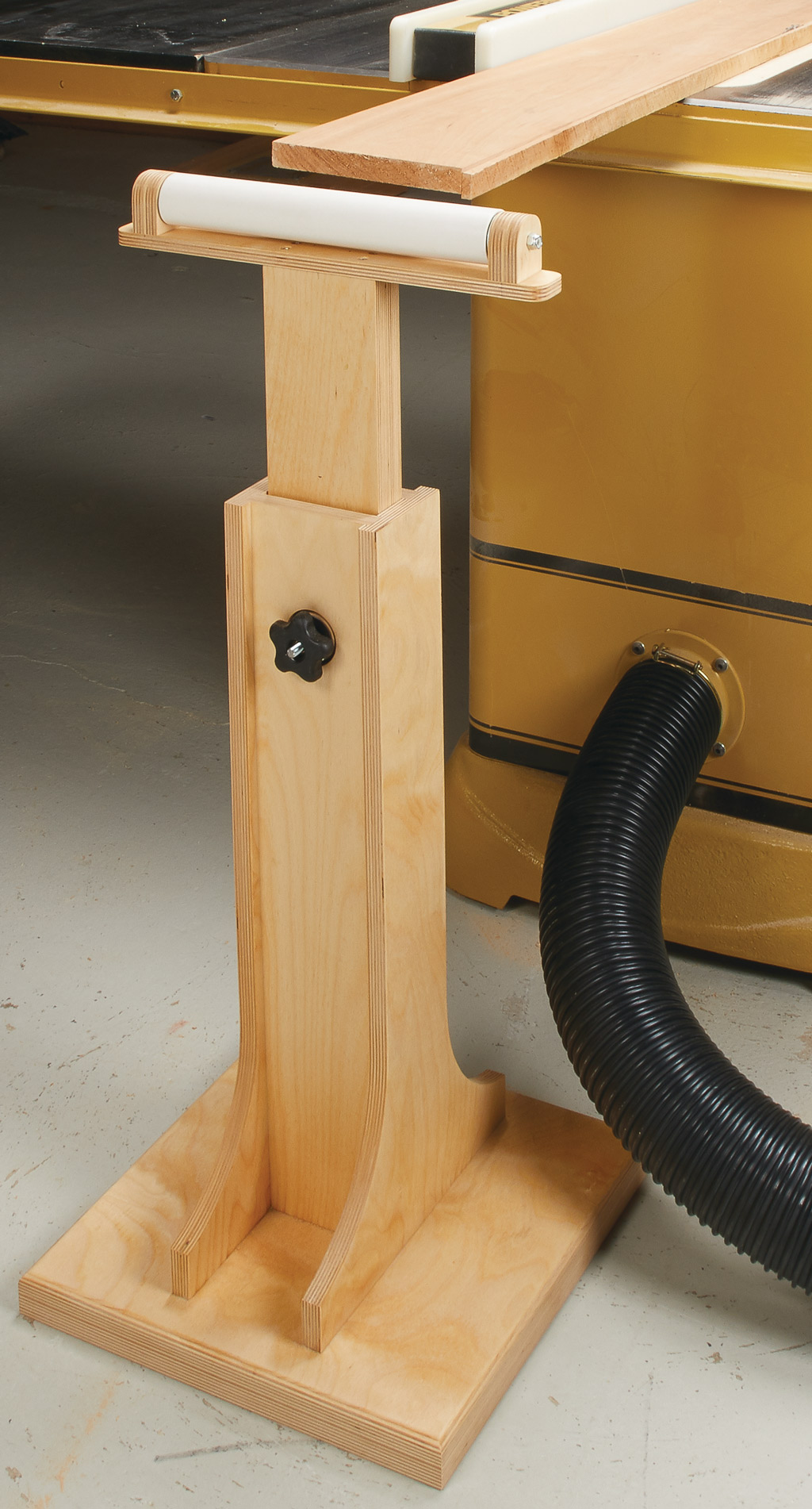Like most woodworkers, I use power tools every day while working on projects. But the power tool that gets the most use in my shop is definitely the table saw. Whether it’s breaking down stock or making an accurate cut for joinery, the table saw is my tool of choice. One of the things that makes my table saw so useful is the handy jigs and accessories I’ve built over the years. These accessories allow me to do my work at the table saw faster, with greater accurately, and less effort. But more importantly, they make the work a lot safer.

At first glance, this push block appears to be rather simple. But don’t let its appearance fool you. The right push block not only makes the work safer, it also improves the quality of your work. One thing I like about this push block is the “high-mounted” comfortable position of the handle. It keeps your fingers well above and away from the spinning saw blade. Best of all, you don’t sacrifice any control. The forward sweep of the handle lets you place constant downward pressure on the workpiece for a steady, controlled feed into the saw blade. As you might expect, the body and cleat are going to get chewed up after you pass them over the blade a number of times. So this push block is designed with replaceable parts. All you need to do is flip the body or cleat over when you need a new edge or simply replace them with new ones. Then you can quickly attach the handle with a screw and get back to work again.

Cutting a number of pieces all to the same length at the table saw can be a challenge. No matter how accurately you line up the cut, each piece ends up a little different. But adding a stop block to an auxiliary miter gauge fence makes this task easy. The flip stop is fastened to an L-shaped block with a bolt and wing nut. The block is then bolted to a piece of hardboard. This forms a clamp that fits over the auxiliary fence and can be locked in position by tightening a plastic knob. To help prevent the block from slipping on the fence, I added sandpaper along the bottom inside surface of the block and spacer. Using the stop is easy. Just rotate the flip stop out of the way and square up one end of the workpiece. Then, you can quickly flip the stop back down to cut each piece to the same exact final length.

Ripping long boards or panels on the table saw can be difficult when you’re working alone. You usually need to find a friend to help you to get the job done safely. A good outfeed support can solve this problem. And you won’t need to spend a lot to meet your needs. This outfeed roller is simple and inexpensive to build. All it takes is some scrap lumber, a short length of PVC pipe, a dowel, and a few screws. The roller is designed to be clamped firmly to a solid support, like the sawhorse shown in the photo. This way, once it’s set up, the outfeed roller stays securely in place, and you won’t need to worry about it falling over or shifting out of position.

Jigs that make it easier to cut tenons on the table saw are usually fairly expensive. But you can build a simple jig that works great. All it takes is a small investment in materials and little bit of your time. If you take a look at the drawing, you’ll see just how easy this jig is to build. It’s sized to slip over and slide smoothly along the rip fence of your table saw. So all you need to do to line up a cut is simply adjust the position of the rip fence. To build the jig, begin with two face pieces. Cut a dado in one face for the vertical stop that holds the workpiece securely in place. Then cut dadoes and add the spacers to allow the jig to fit over your rip fence. You can use the jig to quickly and easily cut the cheeks of a tenon. But that’s not all it will do. You’ll find it also works great for creating smooth cheeks for a half-lap joint or cutting a bridle joint.













